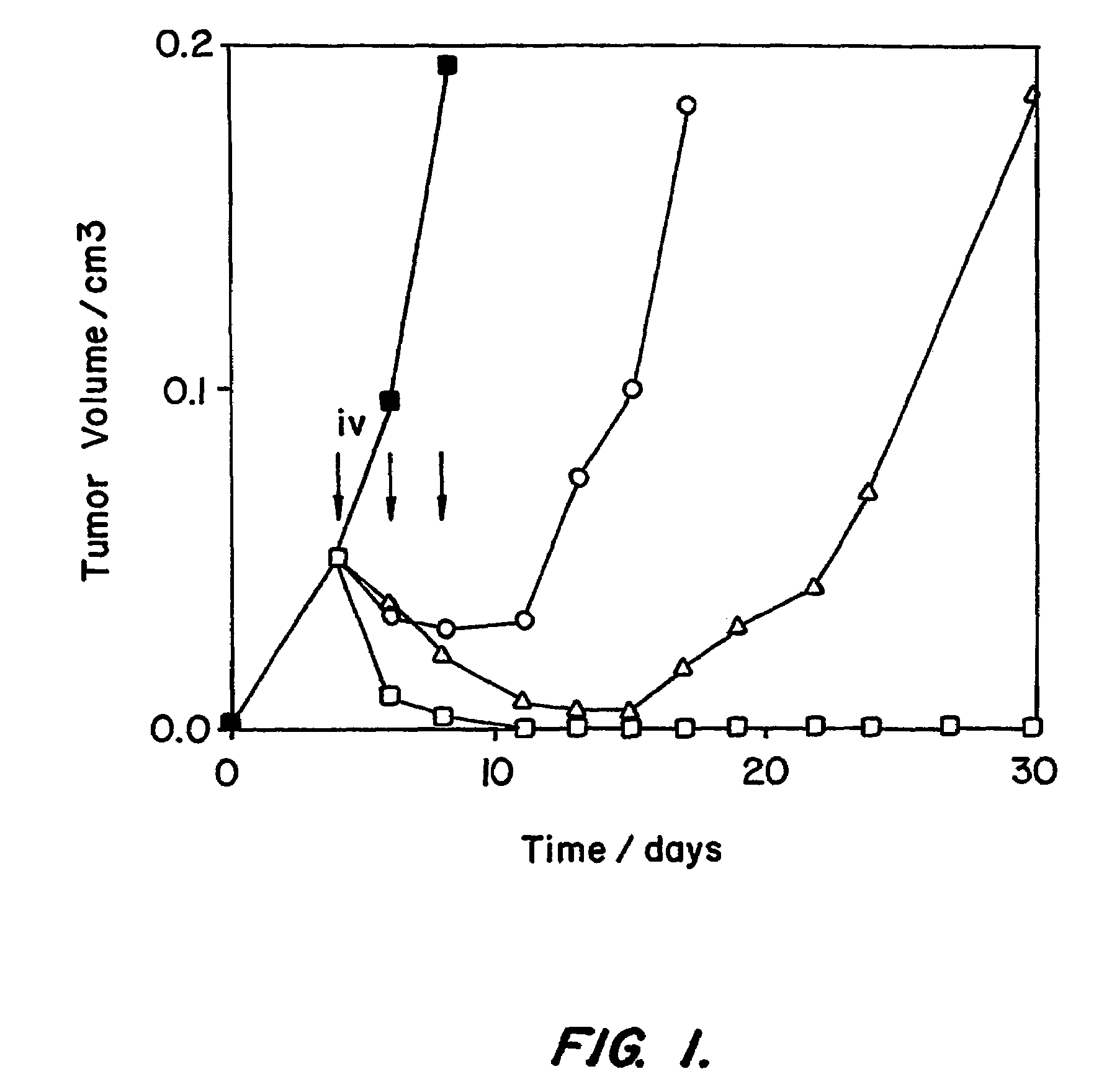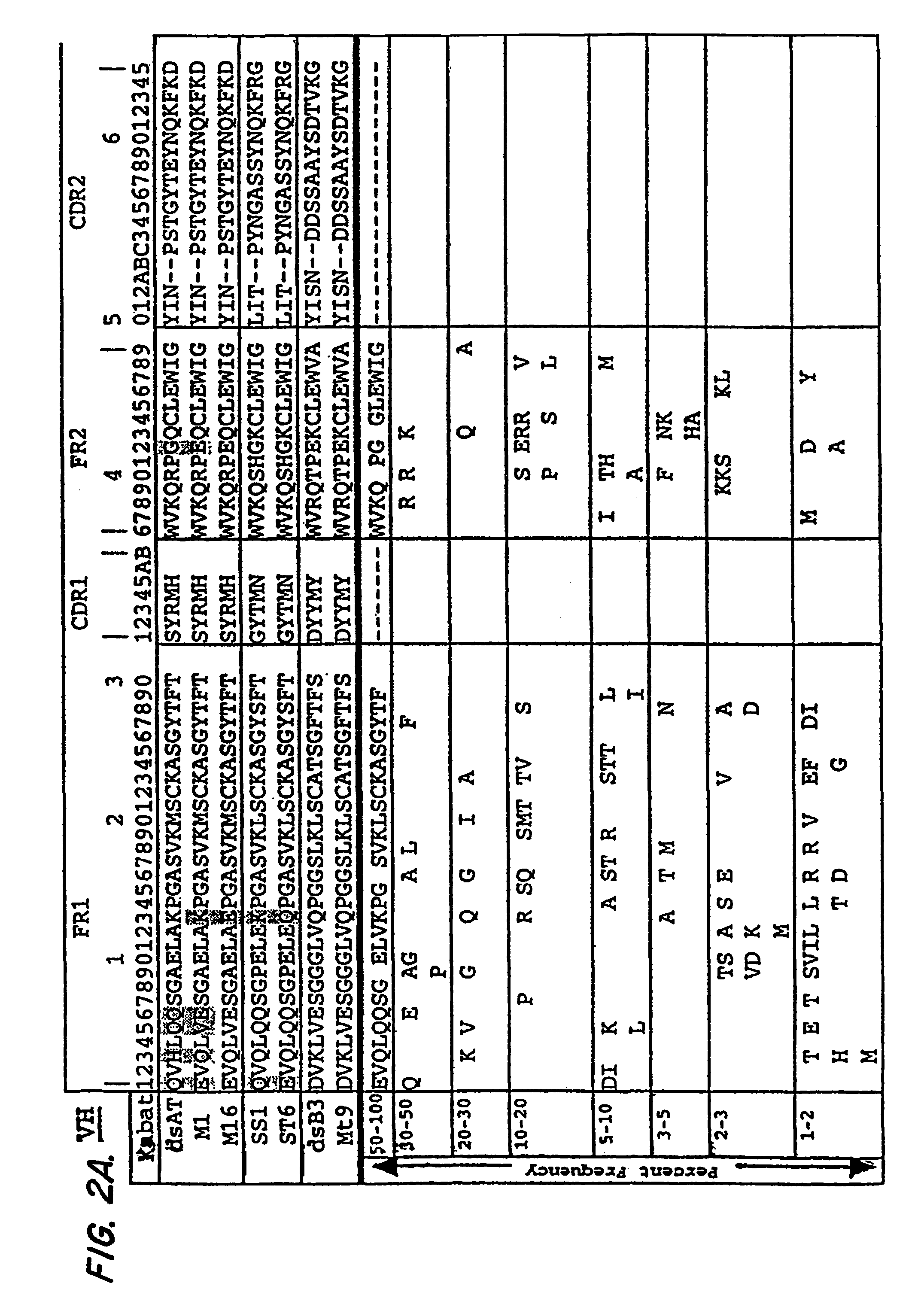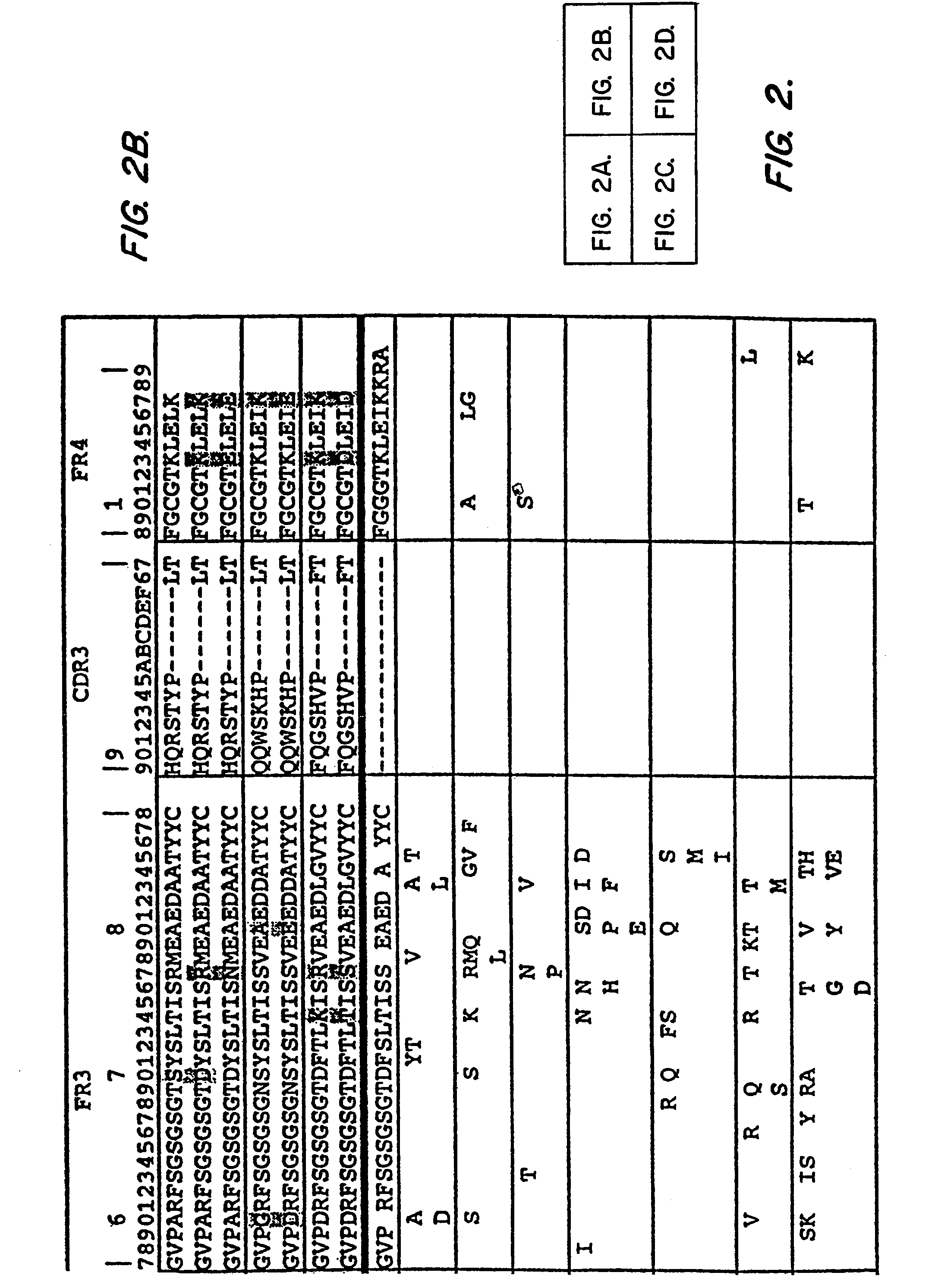Reduction of the nonspecific animal toxicity of immunotoxins by mutating the framework regions of the Fv to lower the isoelectric point
- Summary
- Abstract
- Description
- Claims
- Application Information
AI Technical Summary
Benefits of technology
Problems solved by technology
Method used
Image
Examples
example 1
[0157]This Examples sets forth the materials and methods used in Example 2.
Calculated pI Value of Fv
[0158]The pI of each Fv was calculated using a program in the Genetics Computer Group (Madison, Mich.) package that is available through the web site http: / molbio.info.nih.gov / molbio / gcglite / protform.htm. In the Fv portion, cysteines have no charge because they are disulfide bonded. These were converted to serine for the pI calculation. LMB.2 has a high pI (10.21), whereas the pI of RFB4 is 7.67.
Modeling of Electrostatic Potential
[0159]Electrostatic potential was mapped to the molecular surface of wild-type and M1-mutant models of anti-Tac(Fv). The models of the wild-type and mutant were produced using GRASP (Nicholls, A. et al., Proteins Struct. Funct. Genet. 11:281 (1991)) and Ribbons (Carson, M. J. Appl. Crystallogr. 24:958 (1991)) and were generated by homology modeling starting from the crystal structure of McPC603, a phosphocholine-binding mouse myeloma protein (Rudikoff, S., et...
example 2
[0168]One group of particularly useful recombinant immunotoxins is composed of Fv fragments of mouse mAbs fused to a 38,000 m.w. form of PE known as PE38. The Fv fragment replaces the binding domain (domain Ia) of native PE and directs the toxin to Ags on cancer cells. Because mouse mAbs are selected by the mouse immune system not to react with mouse antigens (“Ag”), the toxicities that occur in mice that have been administered these recombinant immunotoxins are due to nonspecific interactions of the recombinant immunotoxins with mouse tissues. The data in Table I show the LD50 in mice of three different recombinant immunotoxins that are made with three different mouse mAbs, none of which specifically react with mouse cells. Anti-Tac(Fv)-PE38 is targeted at the a subunit of the human IL-2 receptor (CD25) (2, 11). SS(Fv)-PE38 is targeted at an Ag termed “mesothelin” that is found on mesothelial cells, ovarian cancers, and mesotheliomas (Chowdhury 1998). RFB4(Fv)-PE38 is targeted to C...
example 3
[0176]The procedure discussed in Example 2 showed that the nonspecific toxicity of the recombinant immunotoxin anti-Tac(Fv)-PE38 was reduced by introducing mutations in the Fv portion that lower the pI from 10.21 to 6.82.This was accomplished without altering residues in the complementarity-determining regions, and therefore did not affect the specific cytotoxic effect of the immunotoxin on target cells expressing CD25. As a consequence, tumor-bearing mice could be treated with higher doses and enhanced antitumor activity demonstrated.
[0177]Framework residues were changed so that Ag binding would not be affected. Residues were selected that differed between the Fv of mAb RFB4 and that of anti-Tac because RFB4(Fv), which has a pI of 7.67, was much less toxic to mice than anti-Tac(Fv)-PE38 (Table II). In this approach, only one marginally basic residue, was changed, VH H3; this change was not expected alter the pI, because histidine should be largely unprotonated at pH 7.2, which is t...
PUM
| Property | Measurement | Unit |
|---|---|---|
| Temperature | aaaaa | aaaaa |
| Temperature | aaaaa | aaaaa |
| Temperature | aaaaa | aaaaa |
Abstract
Description
Claims
Application Information
 Login to View More
Login to View More - R&D
- Intellectual Property
- Life Sciences
- Materials
- Tech Scout
- Unparalleled Data Quality
- Higher Quality Content
- 60% Fewer Hallucinations
Browse by: Latest US Patents, China's latest patents, Technical Efficacy Thesaurus, Application Domain, Technology Topic, Popular Technical Reports.
© 2025 PatSnap. All rights reserved.Legal|Privacy policy|Modern Slavery Act Transparency Statement|Sitemap|About US| Contact US: help@patsnap.com



